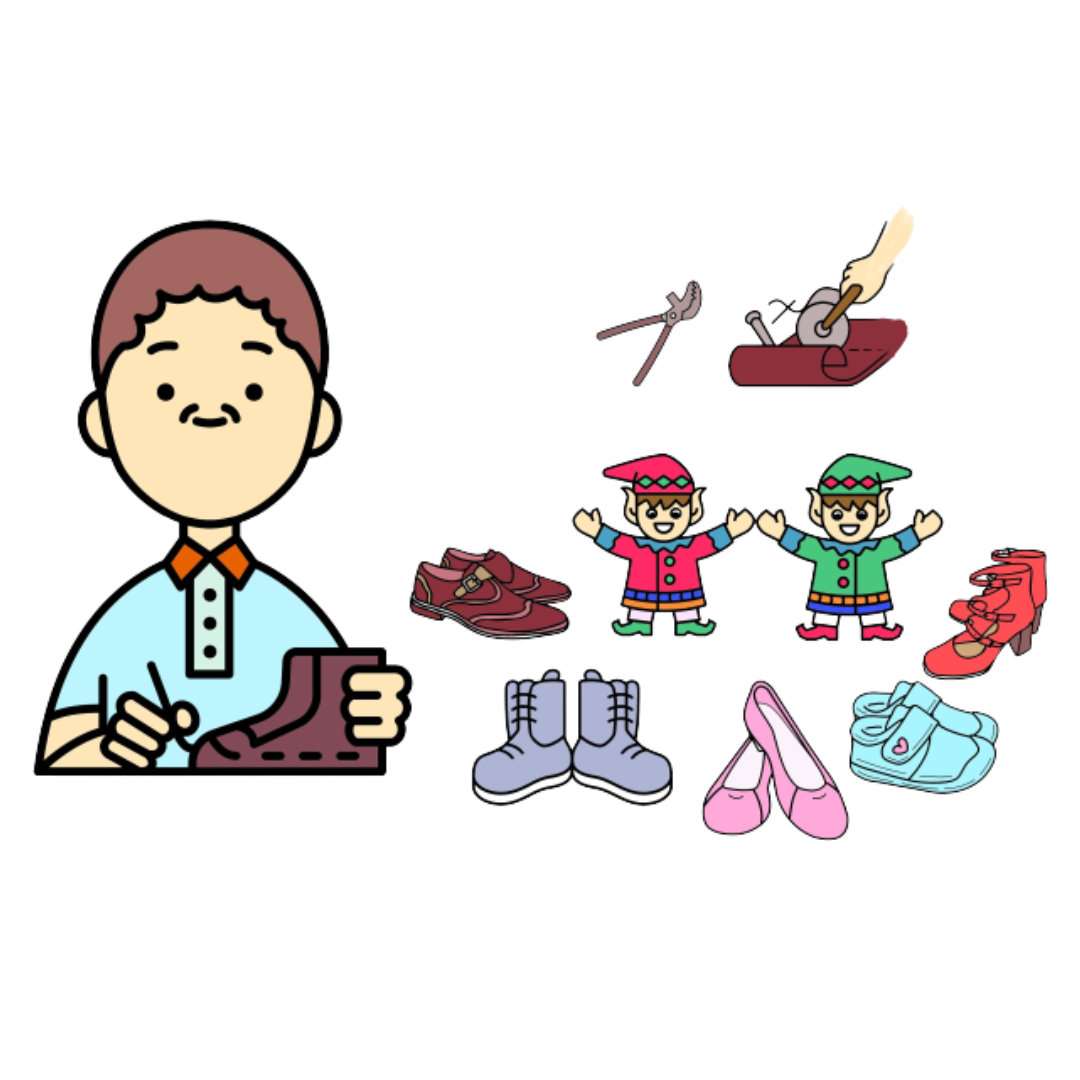Read paragraph 1.
"He was left with just enough leather to make a single pair of shoes."
Read paragraph 2.
"The shoes looked so well on him that he willingly paid a high price. The shoemaker could now buy enough leather for two pairs of shoes."
Read paragraphs 4 and 5.
"As soon as the clock struck twelve, in came two little naked dwarfs. They sat down at the shoemaker's bench, took up all the leather that was cut out, and began to work diligently, stitching, sewing and hammering with their nimble fingers and flying hands."
"They hopped and danced and sang merrily."
Read paragraphs 1 and 2.
"The next morning, he got up early and started working. To his amazement, the shoes were completely finished. They were made with excellent workmanship."
"Soon buyers came and they bought the shoes." ... "This went on for some time, and the shoemaker became rich."
Read paragraph 4.
Read paragraph 5.
"She suggested, 'I'll sew some shirts, undershirts, trousers and jackets for them, and knit a pair of stockings for each of them. You'll make each of them a pair of shoes.' The good cobbler agreed with his wife. One evening, all these things were ready."
Read the sentences carefully to understand their meanings.
Read paragraph 5.
"The wife said to her husband, 'These little elves have made us wealthy. We ought to show them our gratitude ...' "
Read paragraph 5.
"At first they were puzzled, but they were soon overjoyed."
The Elves and the Shoemaker
Score Sheet
| Questions | Results |
|---|---|
| Question 1 | |
| Question 2 | |
| Question 3 | |
| Question 4 | |
| Question 5 | |
| Question 6 | |
| Question 7a | |
| Question 7b | |
| Question 7c | |
| Question 7d | |
| Question 8 | |
| Question 9 | |
| Total |
Extension: Time to think!
10. What is the moral lesson of the story?
11. Do you have a family member or a friend who always helps you? What does this person say to you or do for you? Think and share with your parents or classmates.
